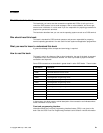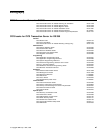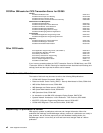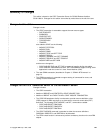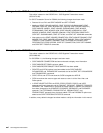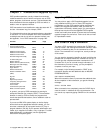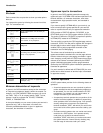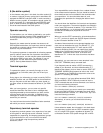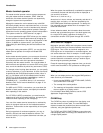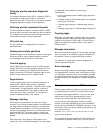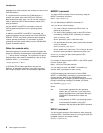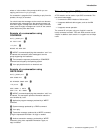
introduction
Chapter 1. Transactions supplied by CICS
CICS provides operations, usually initiated from terminals,
called
transactions
, each of which involves the use of CICS
tables, programs, and internal services. This book deals with
those transactions that are supplied by CICS and which, in
addition, have an operator interface.
CICS transactions have identification codes that start with “C”
and are 4 characters long; for example, CEMT.
The following table shows the transactions that are described
in this book. For a more complete list of CICS transactions,
including those that do not have an operator interface, see
the Appendix, “List of CICS transactions” on page 263.
In general, you start a CICS transaction by entering its
transaction identifier (for example, CEMT). The transaction
identifier is used by CICS to identify the programs that
handle the specified transactions, and to establish a task to
process them.
If you use an IBM 3270 system display or similar display
device that has the appropriate features installed, you can
also start a transaction by a program function (PF) key or
program attention (PA) key, by an operator identification card
reader, by a magnetic slot reader, or by a light pen. For other
types of terminals or subsystems, see the appropriate
CICS/OS/VS subsystem guide.
Upgrading CICS transactions
You may wish to apply a CICS-supplied upgrade, but are
using modified versions of one or more CICS-supplied
transactions or of the CICS-supplied calling programs that
handle CICS-supplied transactions. After you have first
copied them to differently named groups, you must replace
these private versions from the upgraded CICS-supplied
version and modify them afresh to ensure that the necessary
upgrade changes are carried out. Failure to do this can lead
to unpredictable results.
How to start or stop a transaction
You start a CICS transaction by pressing the CLEAR key to
clear the screen, and entering the transaction identifier, either
by itself or followed by data, on the command line of the
screen. The command line is a single line, usually at the top
of the screen.
You can type the transaction identifier by itself and follow the
prompts until a complete transaction command is built up, or
you can type the complete transaction command on the
command line. If you do not enter enough information, or if
the information you enter is wrong, you are prompted to
complete or correct your input.
For example, in the following transaction, CEMT is the
transaction identifier and the additional data is INQUIRE
PROGRAM(PROG1).
CEMT INQUIRE PROGRAM(PROG1)
When the transaction starts, it processes the additional data.
At the completion of this transaction, you get the following
message:
STATUS: SESSION ENDED
After a transaction has completed, press the CLEAR key to
clear the screen in readiness for the next transaction. You
can cancel any request by typing CANCEL on the command
line.
Function Name Page
| CICS business transaction
| services (BTS) browser
| CBAM| 9
Command-level interpreter CECI,
CECS
31
Database control inquiry CDBI 13
Database control interface CDBM 15
Database control menu CDBC 11
Execution diagnostic facility CEDF 41
CEDX 41
In-doubt testing tool CIND 227
Master terminal CEMT 45
Master terminal (alternate CICS) CEBT 21
Messages and codes display CMAC 229
Message switching CMSG 231
Page retrieval CSPG 253
Remote transactions CRTE 247
Resource definition online
(RDO)
CEDA,
CEDB,
CEDC
33
Sign off CESF 215
Sign on CESN 217
Supervisory terminal CEST 219
Temporary-storage browse CEBR 19
Terminal status CEOT 213
Trace control CETR 221
Terminal and system test CSFE 249
Write to console operator CWTO 259
Copyright IBM Corp. 1982, 1999
1



